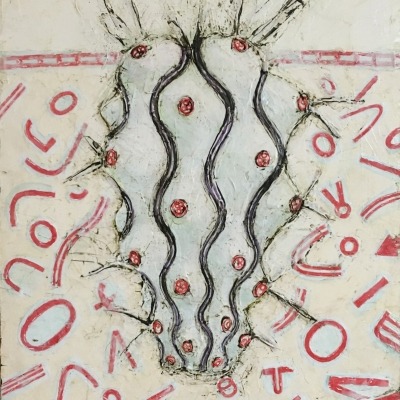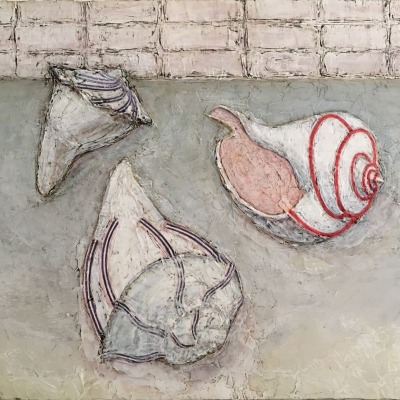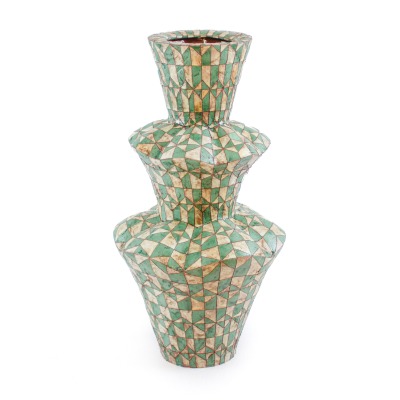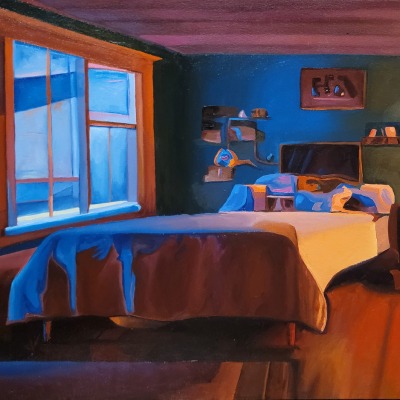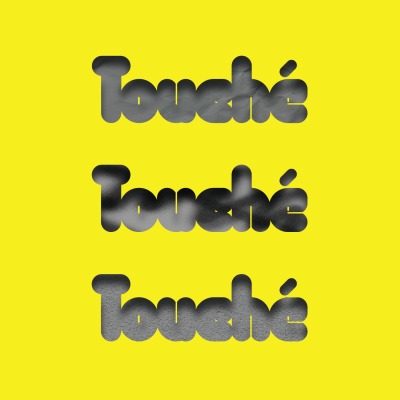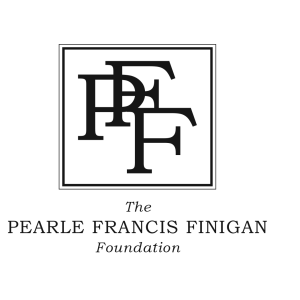Two Geometric Journeys
Two Geometric Journeys
LJS Review
Geometry seems to be so much a part of my thinking and visualizing in the studio. A dictionary would tell us that geometry is the part of math that studies the sizes, shapes, positions, and dimensions of things. When I am questioning the surface of a pot, I imagine myself as an ant crawling over the pot. Such an intimate vantage point! What direction would I be inclined toward? What trail would my journey make over the topography of the form’s surface? Would I walk a straight dividing line, or make a loop? How does the form guide my wandering? What patterns would punctuate the surface activity? How could this be explored through color? What if I were two or three ants?
When Martha Horvay and I discovered that geometry seemed to be our most obvious common denominator, I looked up geometry terms to widen my approach and came up with an infusion of ideas that will fuel me for some time to come. Words like “aquifer”, “canal”, “crater”, “atlas”, “alluvial fan”, “confluence”, and that is just the beginning of the alphabet! It became clear that my daily dive into making small hanging plates was truly an “atlas”: a collection of maps of my daily journeys with plates. A bowl may be seen to have a “crater” interior, or a “ravine”, or an “oasis”. A series of curves may become a “meander”. The division of space on a pot or a painting, the shapes that result, this is all part of both intuitive and learned geometry. - Holly Walker
This work chronicles the shift in my interests over the past year. My core pursuit of the interplay of flat pattern and three-dimensional volume, remains the same. My subject matter of the past forty years encompassed objects made by human beings, particularly architecture, motor vehicles, and household goods. In the isolation of the pandemic, I turned to objects that surround me in my studio, primarily whelk shells that I collected from South Carolina beaches. I view the shells as specimens of complex form, rather than as traditional still life. The lines on the surfaces emphasize their patterns of growth. Color gradually drained away, through no sense of planning on my part. It just seems to be what my current mood demands. In its place, the materiality of acrylic paint becomes a key player. - Martha Horvay






